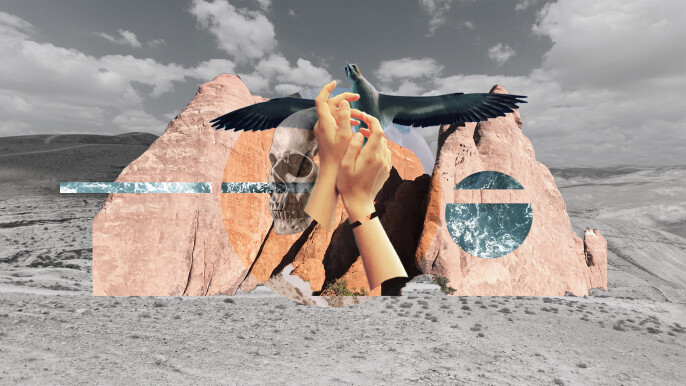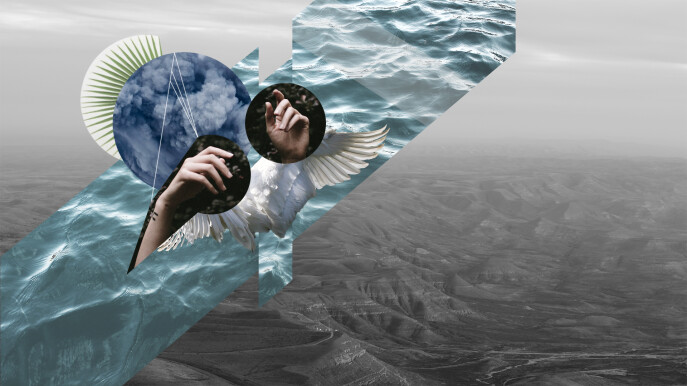The Holy and The Common: An Interview With Jenica Crotts About Faith and Art
Because we believe that art has value in the life of the church, the College + Career ministry works with artists from a variety of mediums to illuminate the biblical themes of our teaching series. Jenica Crotts produced a series of digital collages to illustrate the themes of sin, judgment, and redemption which ran throughout our recent Lent series. She was kind enough to talk with us about her work, and the importance of the arts among the people of God.
Can you explain a bit of your background; how you became interested in art, and the work you do through, "The Holy and The Common"?
I became more interested in art during my education at a liberal arts college. I had always enjoyed my middle school and high school art classes but decided to take some art courses to both fulfill some of those liberal arts requirements and to take a break from my other studies. I especially loved my printmaking course and was intrigued by how to make the flat images more dynamic. I explored digital collage work after college and after learning a few basic Photoshop skills. I invested more time in my college work while working as a teacher. Again, art was an escape from my other stresses, but it also brought a sense of fulfillment.
Why do you think that the church ought to place a value on art? What would you say to someone who struggles to understand its place in the life of the church?
All of creation is God’s handiwork and we, being made in the imago dei, can reflect the Creator with our creations. Both the act of creating and the act of reflecting on the beautiful are worshipful acts acknowledging God as Creator and ourselves as His creatures. Art is also another avenue through which to communicate God’s truth.
Can you explain a some of the symbolism you’ve used in the pieces you produced for Lent?
The Ash Wednesday piece is a bit darker than the rest since Ash Wednesday reminds us of our sin and our finitude. So, for the Ash Wednesday piece, I included a cloud of ashes and a snake as a reminder of sin and the need to repent. The palm branches on the right point to Palm Sunday and Easter and the triumph of Christ’s death and resurrection. The central figure once again plays with sin. The more solemn eyes on the face of a child represent the perversion that sin brings and how we are blinded by our sin.

I tried to make the Lent piece is a little more hopeful. Again, you have the reminder of death and sin with the skull, but the hands and bird above are reaching up from the barrenness of the desert. While the hands aren’t in a praying posture, I was hoping they would communicate supplication. The central stones/mountain point to the barrenness Christ faced in the desert and function as a symbol of him overcoming the devil’s temptation to turn the stones to bread. I’ve also included motifs of water and waves to represent baptism and reconciliation found in Christ.

The final piece combines the motifs from the previous pieces (reaching/praying hands, water, palm branches, ashes/smoke) as well as the wing of a swan, representing purity/reconciliation found in Christ.

As you've mentioned, the imagery of some of these is certainly dark. Why do you think that it’s important that art produced by Christians does not shy away from darker themes?
Sin is a reality. The first step of the gospel message is realizing our need for newness and our need for salvation. If we ignore our sin and ignore the fallen state of creation, we ignore our need for repentance and creation’s need for renewal.
Thanks so much for taking the time to talk with us about this, where can people find you if they’re interested in exploring more of your work?
Right now I am taking a break from collaging as I transition to a new city, but hopefully, soon my etsy shop theholyandthecommon will be back up and running!

